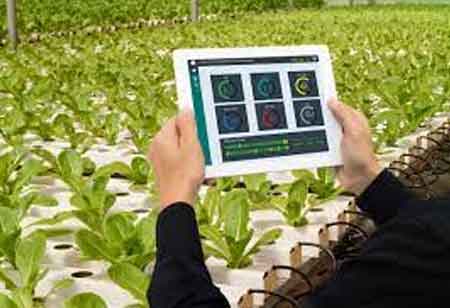Thank you for Subscribing to Agri Business Review Weekly Brief
The Economics of Livestock Farming
Livestock farming faces challenges like climate change, disease, and consumer preferences, requiring efficient methods

By
Agri Business Review | Tuesday, December 17, 2024
Stay ahead of the industry with exclusive feature stories on the top companies, expert insights and the latest news delivered straight to your inbox. Subscribe today.
Livestock farming faces challenges like climate change, disease, and consumer preferences, requiring efficient methods, technological innovations, financial management, sustainable practices, and strong buyer relationships for long-term success.
FREMONT CA: Livestock farming has long been a foundational element of agriculture, supplying countless communities with food, fiber, and economic support. However, the economics of livestock farming is inherently complex, shaped by diverse factors such as input costs, market prices, technological advancements, and evolving market dynamics.
In recent years, the industry has encountered significant challenges, including the impacts of climate change, disease outbreaks, volatile commodity prices, and shifting consumer preferences. Livestock farmers must implement efficient production methods, leverage technological innovations, and adopt robust financial management strategies to maintain profitability in this landscape.
The economics of livestock farming is driven by the principles of supply and demand, with farmers striving to produce livestock products efficiently while remaining competitive in the marketplace. Several key economic factors influence profitability, including input costs, which encompass feed, veterinary care, labor, fuel, and other operational expenses; output prices, which are determined by market demand and supply and can fluctuate based on commodity prices; production efficiency, which can be enhanced through improved breeding, nutrition, and disease management; and market access, which is critical for ensuring competitive pricing. Additionally, government policies, such as subsidies, tariffs, and regulations, significantly shape profitability.
Livestock farmers must adopt a multifaceted approach to maximize profitability, balancing short-term and long-term goals. Embracing technological advancements, such as Precision Livestock Farming (PLF) with sensors, data analytics, and automation, can enhance animal health monitoring and productivity. Biotechnology can improve breeding techniques for better performance and disease resistance, while renewable energy adoption, such as solar and wind power, helps reduce energy costs and environmental impact. Diversification is another strategy, with opportunities to create value-added products like gourmet meats or organic eggs or to generate additional income through agritourism and carbon sequestration practices that earn carbon credits.
Building strong relationships with buyers is also essential, and farmers can benefit from direct marketing through farmers’ markets, community-supported agriculture programs, and online platforms. Joining cooperatives can also provide negotiating power and shared resources. Ensuring food safety and quality assurance is crucial to building consumer trust and meeting market requirements.
Effective financial management, including detailed budgeting, risk management through crop insurance and diversification, and accurate record-keeping, allows farmers to track performance, reduce costs, and navigate financial challenges effectively. By integrating these strategies, livestock farmers can enhance their operational efficiency and profitability in a competitive market.
The economics of livestock farming requires a thorough understanding of key economic drivers, the adoption of technological advancements, diversification of income streams, and cultivating strong buyer relationships. Moreover, effective financial management is crucial to navigating challenges and optimizing profitability. Integrating sustainable practices is equally important, ensuring long-term success while upholding environmental stewardship.





